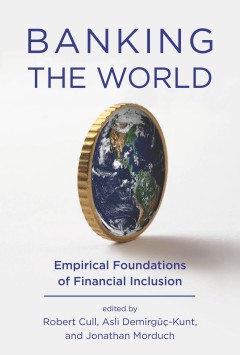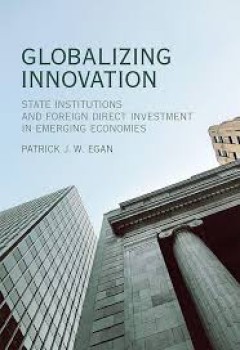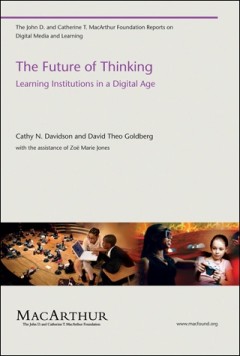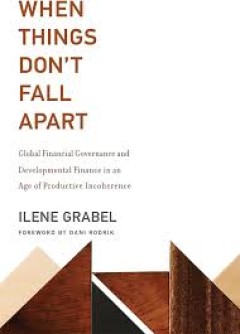Filter by

After the Berlin Wall
After the Berlin Wall' tells the inside story of an international financial institution, the European Bank for Development and Reconstruction (EBRD), created in the aftermath of communism to help the countries of central and eastern Europe transition towards open market-oriented democratic economies. The first volume of a history in two parts, After the Berlin Wall charts the EBRD’s life from…
- Edition
- -
- ISBN/ISSN
- 9789633863947
- Collation
- 420
- Series Title
- -
- Call Number
- -

A United Nations Renaissance
This short introduction to the United Nations analyzes the organization as itis today, and how it can be transformed to respond to its critics. Combiningessential information about its history and workings with practical proposalsof how it can be strengthened, Trent and Schnurr examine what needs to bedone, and also how we can actually move toward the required reforms. Thisbook is written for a…
- Edition
- -
- ISBN/ISSN
- 9783847408604
- Collation
- oer.unej.ac.id
- Series Title
- -
- Call Number
- -

Yearbook on the African Union Volume 2 (2021)
This is the second edition of the Yearbook on the African Union (YBAU). The YBAU is first and foremost an academic project that provides an in-depth evaluation and analysis of the institution, its processes, and its engagements. Despite the increased agency in recent years of the African Union in general, and the AU Commission in particular, little is known – outside expert policy or niche ac…
- Edition
- -
- ISBN/ISSN
- 9789004526013
- Collation
- 296 hlm; ill., lamp.,
- Series Title
- Yearbook on the African Union, Volume: 2
- Call Number
- -

Yearbook on the African Union Volume 1 (2020)
This is the first edition of the Yearbook on the African Union. It is first and foremost an academic project that will provide an in-depth evaluation and analysis of the institution, its processes, and its engagements. Despite the increased agency in recent years of the African Union in general, and the AU Commission in particular, little is known – outside expert policy or niche academic cir…
- Edition
- -
- ISBN/ISSN
- 9789004498914
- Collation
- 296 hlm; ill., lamp.,
- Series Title
- Yearbook on the African Union, Volume: 1
- Call Number
- -

Associative governance in Scandinavia: organizing societies by "combining tog…
Introduction : Scandinavian perspectives on associative governance / Søren Christensen, Anker Brink Lund, Haldor Byrkjeflot and Benjamin Ask Popp-Madsen -- A Nordic model of associative governance? / Haldor Byrkjeflot -- Governing morality : the role of
- Edition
- -
- ISBN/ISSN
- 9781003382775
- Collation
- -
- Series Title
- -
- Call Number
- -

Banking the World: Empirical Foundations of Financial Inclusion
About 2.5 billion adults, just over half the world's adult population, lack bank accounts. If we are to realize the goal of extending banking and other financial services to this vast "unbanked" population, we need to consider not only such product innovations as microfinance and mobile banking but also issues of data accuracy, impact assessment, risk mitigation, technology adaptation, financia…
- Edition
- -
- ISBN/ISSN
- 0262305992
- Collation
- 1 online resource (vi, 511 pages)
- Series Title
- -
- Call Number
- -

Living books :experiments in the posthumanities
"Living Books explores the potential futures of the scholarly book in an increasingly digital environment"--OCLC-licensed vendor bibliographic record.
- Edition
- -
- ISBN/ISSN
- 0262366460
- Collation
- 1 online resource.
- Series Title
- -
- Call Number
- -

Globalizing innovation :state institutions and foreign direct investment in e…
The impact of host country institutions and policy on innovation by multinational firms in emerging economies. In the past, multinational firms have looked to developing countries as sources of raw materials, markets, or production efficiencies, but rarely as locations for innovation. Today, however, R & D facilities and other indicators of multinational-linked innovation are becoming more comm…
- Edition
- -
- ISBN/ISSN
- 9780262344265
- Collation
- 1 online resource (xx, 291 pages) :illustrations
- Series Title
- -
- Call Number
- -

The Future of Thinking: Learning Institutions in a Digital Age
How traditional learning institutions can become as innovative, flexible, robust, and collaborative as the best social networking sites. Over the past two decades, the way we learn has changed dramatically. We have new sources of information and new ways to exchange and to interact with information. But our schools and the way we teach have remained largely the same for years, even centuries…
- Edition
- -
- ISBN/ISSN
- 9780262266529
- Collation
- -
- Series Title
- -
- Call Number
- -

When things don't fall apart :global financial governance and developmental f…
An account of the significant though gradual, uneven, disconnected, ad hoc, and pragmatic innovations in global financial governance and developmental finance induced by the global financial crisis. In When Things Don't Fall Apart, Ilene Grabel challenges the dominant view that the global financial crisis had little effect on global financial governance and developmental finance. Most observers…
- Edition
- -
- ISBN/ISSN
- 9780262344043
- Collation
- 1 online resource (xxi, 372 pages)
- Series Title
- -
- Call Number
- -
 Computer Science, Information & General Works
Computer Science, Information & General Works  Philosophy & Psychology
Philosophy & Psychology  Religion
Religion  Social Sciences
Social Sciences  Language
Language  Pure Science
Pure Science  Applied Sciences
Applied Sciences  Art & Recreation
Art & Recreation  Literature
Literature  History & Geography
History & Geography